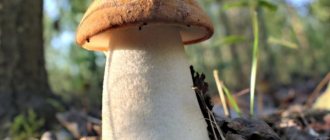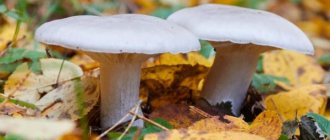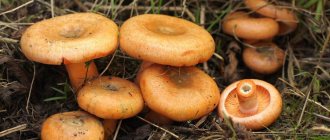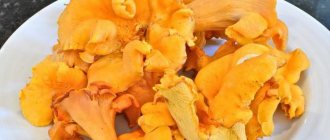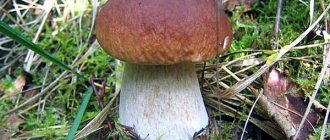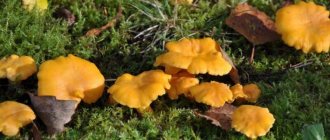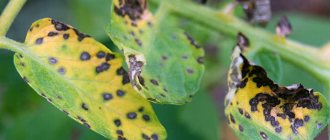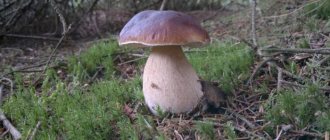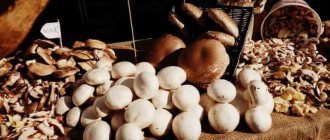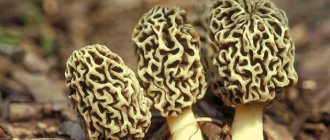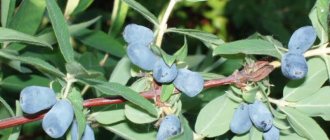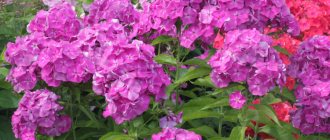What mushrooms are common in Bashkiria
The climate in the Republic of Bashkortostan is temperate continental; the weather here in spring, summer and autumn is quite warm and sunny, which is very favorable for the growth and development of many types of mushrooms. From early spring until mid-autumn, you can find a large number of mushrooms in the forests of Bashkiria.
More than a hundred species of macromycetes are common in the republic, of which only about 30% are classified as edible. The most popular among mushroom pickers are milk mushrooms, boletus and aspen mushrooms, several types of honey mushrooms, chanterelles, and russula. The category of inedible and poisonous mushrooms growing in Bashkiria includes toadstool, fly agaric, and false honey fungus.
The beginning of the mushroom season in Bashkiria
The collection season begins in the spring - as soon as the snow melts. Spring mushrooms appear first - they are not as good as boletus and other noble species, but after the winter “downtime”, mushroom pickers are happy with them. The latter, autumn mushrooms, finish bearing fruit during a period of severe cold.
And the real mushroom season - with the massive collection of boletus, saffron milk caps, milk mushrooms, boletus and other popular mushrooms - begins at the end of September. Sometimes there is a shift to a later date - if good mushroom rains do not occur in time.
Edible spring mushrooms
In early spring, as soon as the sun begins to warm up, the first mushrooms appear. Their selection is not yet very rich, but even they can become a source of good mood and positive emotions for lovers of quiet hunting.
| Name | hat | Leg | Spreading |
| Common morel | Ovoid or unevenly spherical, cellular, hollow, ocher or brownish in color | Hollow, fairly brittle, slightly folded or smooth | In light deciduous and mixed forests, on the edges, meadows and clearings, along roads |
| Conical morel | Olive-brown, gray or brown in color, ribbed, characteristic conical shape | Hollow, fragile, white in color | Throughout the forest zone, as well as in the clearings |
| Morel cap | Bell-shaped, with a wrinkled surface, brown or yellowish in color | Tall, relatively thin, white or cream colored | In deciduous forests, under aspen, linden and birch trees |
| Sulfur-yellow tinder fungus | Flat-round, yellowish in color, dough-like | Dense and quickly woody | On wood in deciduous forests |
| Variegated tinder fungus | Saddle-shaped, yellowish in color with large brownish scales on the surface | Thick and short, dark brown at the base, dense | On wood in deciduous forests |
Description of the mushroom place
Mushroom places in Bashkiria:
Krasny Yar village, Ufa district;
Yazykovo village, Blagovarsky district;
Mushroom areas are located in the zone of deciduous and mixed types of forests, in which pine, aspen, birch, oak, and linden trees grow. The temperate continental climate is characterized by cold, long winters and warm, average humidity summers. All these factors make it possible to harvest abundant mushroom harvests every year. A specialized mushroom map containing a detailed description of the area will help you find mushroom places in Bashkiria.
Photo gallery
Types of edible honey mushrooms in Bashkiria
The honey fungus mushroom grows on a thin stalk and is distinguished by a small cap, the diameter of which is no more than 6 cm. Its lower part is dark in color and covered with scales. The cap of a young mushroom has a tubercle in the center.
Spring steppe honey mushrooms can be found in the field, they grow right under your feet. They are difficult to spot in thick grass. Outwardly, they resemble an ordinary mushroom, but their stem is not so thin.
Varieties of summer honey mushrooms are slightly different from the usual autumn fruits. Their cap is much smaller, does not exceed 3 cm, and is colored yellow-brown. Sometimes towards the center it changes to cream. The thin leg has a film similar to a skirt. Summer mushrooms are shown in the photo. In Bashkiria, it is customary to pickle, salt, and dry them.
Autumn and winter mushrooms are of particular value. They are collected young, before the caps have fully opened. Some varieties are distinguished by bright caps with a characteristic honey hue. They are easy to collect, because they stand out especially in an empty forest.
Attention! Winter mushrooms do not have poisonous counterparts.
Edible summer mushrooms
Sufficiently warm summer weather with an optimal amount of rain stimulates the very rapid growth of different types of mushrooms in the forests of Bashkiria. The forests of this republic are very rich in mushrooms of various categories of nutritional value, including edible and conditionally edible species.
| Name | hat | Leg | Spreading |
| Semi-white | Light brown, with golden yellow tubular layer | On the cut it has a pale yellow color | Oak forests |
| Dubovik | When cut, the pulp is lemon-yellow in color and quickly turns blue. | The leg is dense, dark | Mixed forests |
| Green moss | Leveled-convex, with a suede-type surface of olive or brownish-green color | Often curved, yellowish in color, tapering at the base | Mixed forests |
| Chanterelle | The yellow cap is first convex in shape, then flat and funnel-shaped. | Short, dense, cylindrical | Mixed forests with birch, pine or spruce trees |
| Red boletus | Bright red or orange, with good density | Covered with fluffy brownish scales | Aspen and mixed forests |
| Dubravnik | Dense, light brown, almost yellow or dark brown | Pot-bellied and white with a barely visible mesh on the surface | Pine or oak forest |
Inedible mushrooms of Bashkiria
70% of the mushroom mass in the forests of Bashkiria are inedible and poisonous mushrooms. If the former taste bad and can only spoil the dish, then the latter can cause severe poisoning, even death. To protect yourself from eating poisonous mushrooms, you should know all of them by name - with signs and places of growth. Let's see what deadly mushrooms can be found in the forests of Bashkiria.
A report on the peculiarities of mushroom picking in October. Experts talk about the rules for collecting mushrooms that will help avoid poisoning:
fly agaric
Description. Red fly agaric is a beautiful mushroom with a bright cap topped with white scaly specks.
Where does it grow and when? Grows in any forest. Fly agaric is capable of creating mycorrhiza with any trees. Growth begins at the end of July.
Who can be confused with? It is impossible to confuse red fly agarics - there are no such bright and noticeable mushrooms in the forest anymore. In addition to red, there are other poisonous varieties - panther, stinking, toadstool. But there are also edible fly agarics - for example, gray-pink and Caesar. They are even cultivated artificially. For this purpose, spore-bearing caps are used - they are cut and mixed with the soil.
Death cap
Description. The pale grebe and all its relatives are very similar in shape, the differences are only in color and nuances. They all have one thing in common - they are terribly poisonous. The color of the cap may vary in shades - there are greenish, olive, and grayish toadstools. Hats are flat or hemispherical, with smooth edges. If the pulp is broken, its color does not change. Toadstool tastes sweet, but does not smell anything. The lower part of the leg has a thickening with a film, and on the upper part there is a film ring. The tuberous thickening at the bottom of the leg is the main difference between the toadstool, by which it can be unmistakably identified.
Where does it grow and when? Grows alone and in groups. It grows everywhere, but prefers mixed and deciduous forests. Growth begins in late summer.
Who can be confused with? Inexperienced mushroom pickers may mistake toadstools for russula, green mushrooms, or champignons.
Poisonous row
Description. In the poisonous gray row, the edges of the cap are turned inward. The color of the hat is off-white, brownish, gray. The pulp is white, with a floury smell and taste. The hat has densely arranged scales. The leg is covered with a powdery coating. Greenish-yellow plates grow to the stem.
Where does it grow and when? Prefers sandy soils covered with moss. Grows in coniferous forests, pine trees, parks and gardens, fields and meadows. The ripening period is August-October.
Who can be confused with? Can be confused with edible rows. There are many conditionally edible mushrooms in their family.
False honey mushrooms (sulfur-yellow)
Description. Sulfur-yellow honey mushrooms have strong caps, reaching a diameter of 7 cm. At first, the caps are spherical, and as the mushroom grows, they straighten out. The color of the caps is bright yellow. There are orange spots in the center. The legs are thick and hollow. The color is similar to the hat. The pulp on the break is yellow, smells unpleasant, and tastes bitter.
Where does it grow and when? They bear fruit from mid-June until the snow. They grow in forests of all types and in fields. Grows on tree trunks and rotten stumps. Colonies can contain up to 20 individuals.
Who can be confused with? Usually confused with edible honey mushrooms. The main difference from real mushrooms is the absence of scales. Real mushrooms - summer and autumn - have brown legs, like their hats.
Cobweb
Description. There are about 400 species of spider webs. Among them there are both poisonous and edible. They are practically not collected - they look like toadstools. Many smell bad. Two mushrooms are considered deadly poisonous - the mountain mushroom and the beautiful cobweb mushroom. The cap of the mountain web spider is brown-red or orange, the plates are of the same color. The leg is yellowish, it has longitudinal rusty fibers. The most beautiful cobweb is similar to the mountain one. The young have a cobweb-like coat of yellow-ocher color.
Where does it grow and when? Cobwebs grow in coniferous forests and love moss and moist, swampy soil.
Who can be confused with? Can be confused with the edible web spider, which has a brown, fleshy cap with inwardly curved edges.
On the territory of Bashkiria there are zones that differ in relief and climate, so different types of mushrooms are found here. The main thing is not to confuse an edible mushroom with false doubles, and not to put a poisonous mushroom in the basket.
0
0
Copy link
Edible mushrooms: description (video)
| Name | hat | Leg | Spreading |
| Ryzhik | Convex or funnel-shaped, red or characteristic greenish-brownish in color | The same color as the cap or a little lighter | Spruce and pine forests and plantings |
| Real milk mushroom | Milky white or creamy yellowish with almost imperceptible concentric circles | Dense, thick, exuding white milky juice when cut | Deciduous and mixed forests |
| Volnyanka | Flat, with a depression in the center and rolled edges, bright pink with concentric circles | Dense and thick, exuding white bitter milky juice when cut | In birch forests and plantings mixed with birch |
| Variegated umbrella | Diameter up to 20-30 cm, closed, bell-shaped or prostrate | Cylindrical, high, with an extension at the base | Deciduous forests, edges and meadows |
| Oiler | Convex in shape, colored in different shades of yellow and brown, shiny, sticky | Straight, relatively thin and tall | Sparse plantings of pine, spruce or larch |
| Mokrukha spotted | Reddish or reddish-brown in color, with sparse and thick plates | Same color or slightly lighter than the cap | Deciduous and mixed forests |
September is traditionally the month of honey mushrooms, which grow very abundantly in the forest areas of Bashkiria.
What edible mushrooms are collected in September?
And September mushrooms are especially good - fragrant, bright, shiny from condensation formed as a result of temperature changes. It is during this period that the largest harvests can be harvested, the fruiting of which is facilitated by the climatic conditions of the region.
Honey mushrooms
A distinctive feature of honey mushrooms is their growth on stumps and old wood, where these small fungi form entire colonies. The color of their cap can be of different shades, depending on the characteristics of the nutrient medium. Thus, in nature there are honey mushrooms of pale brown, red, honey and even olive shades, young specimens of which are considered a real delicacy.
Rogatiki
In the Bashkir forests and deciduous forests you can find a huge number of all kinds of hornets, the main distinguishing characteristic of which is an elongated coral-like fruiting body. These mushrooms have a fragile, watery structure, more suitable for marinades and pickles than for classic frying in a pan.
Saffron milk caps
This variety has a rich orange cap, owing its brightness to the high content of beta-carotene in the fruit body. But the list of beneficial properties of the mushroom does not end there, because it is not without reason that its nutritional properties are practically not inferior to chicken, veal and egg yolk. As for collecting saffron milk caps, it is better to go to the forest after heavy rains, as they are moisture-loving.
Milk mushrooms
Finding milk mushrooms is not so easy, because they are accustomed to hiding under a dense layer of fallen leaves and dead wood, forming entire settlements in such shelters. Among the main features of the species are dense white pulp, secreting milky juice, and a delicate fruity aroma.
Inedible and poisonous mushrooms
According to the nature of the poisoning caused, all poisonous mushrooms can be divided into three main groups:
- capable of causing food poisoning;
- capable of causing disturbances in the activity of the nervous system;
- life-threatening – deadly poisonous.
Of course, there are not so many deadly poisonous mushrooms, but these are the species that you need to know, as they say, “by sight”:
- spring and stinking fly agaric, the amatoxins of which almost instantly destroy liver tissue;
- whitish and reddish talker, damaging the human central nervous system with muscarine;
- cobwebs and lepiota.
Somewhat less often, fatal cases are recorded when eating the poisonous entoloma and the sulfur-yellow false foam, as well as the pigwort, which is widespread in our forests.
Collection rules and precautions
If you are going on a silent hunt, you need to know a few basic rules. Take a sharp knife (scissors) and a basket with you. It is better to cut the crop with sharp objects, because... they do not provoke the death of the pulp.
By placing fruiting bodies in a basket, you reduce the risk of damage (unlike a bag or bag). Try to collect only those mushrooms that have reached maturity. It's best to leave the little ones to grow up. Fold the mushrooms so that the larger and denser ones are at the bottom, and the fragile and small ones are in the upper layers.
- Do not harvest near a highway or other road. Exhaust gases settle on the surface and penetrate into the pulp of the fruiting bodies.
- Do not take mushrooms that you are not sure are edible.
- Heat-treat the collected specimens to remove all dangerous and pathogenic bacteria.
Where and when to collect
Experienced mushroom pickers and lovers of quiet hunting rarely share their knowledge about the most mushroom places, however, it is known that the following regions of Bashkiria are among the most productive:
- the glades of Krasny Yar in the Ufa region and the surrounding gardens on the way to the airport, where champignons grow in large quantities;
- mixed forests of the Kushnarenkovsky district, as well as the environs of the village of Kamyshly, where several types of milk mushrooms grow, including the most valuable yellow milk mushroom;
- in birch groves in the Blagovarsky district and in the vicinity of the village of Yazykovo, it is best to collect porcini mushrooms and boletus mushrooms;
- in the vicinity of the village of Ishkarovo in the Ilishevsky district, the largest number of saffron milk mushrooms grow, but for honey mushrooms it is recommended to go to Zaton or the Melkombinat area.
Distribution locations and timing of mushroom collection in Bashkiria
The Bashkir region is rich in its natural gifts, because there are many fruitful places just for picking mushrooms. Among them, experienced lovers of quiet hunting highlight forest belts located in close proximity to the villages of Kushnarenkovo and Kamyshly, entire tracts of the Blagovarsky and Duvansky districts, plantings near Mesyagutovo, the Ozernaya and Yam-Bakhta railway stations, as well as green areas near Zaton, Nurlino , Ishkarovka and Dmitrievka.
You may be interested in: What is the difference between edible talkers and false mushrooms? How many days after rain do mushrooms grow? Bittersweet mushroom: photo and detailed description Some mushroom pickers have their own secret places, which they are in no hurry to reveal for obvious reasons, while others, on the contrary, organize group trips , teaching the difficult science of gathering. Be that as it may, there really are a lot of mushrooms in Bashkiria, and their long fruiting season allows you to always return from the forest with a full basket.
Thus, the first mushrooms begin to appear in mid-April, while cold-resistant varieties can continue to grow even at the end of October. So-called winter mushrooms, such as tinder fungi, are also found in the republican forests, however, they are not eaten, most often finding other uses for the fruits (traditional medicine, etc.) and other inedible or even poisonous specimens.
When will honey mushrooms start in Bashkiria in 2021?
It will not be possible to determine exactly when the mushroom season will begin this year. In each region, the deadlines are shifted by 10-15 days. This depends on the climate and amount of precipitation, as well as air temperatures.
When is the spring and summer honey mushroom season in Bashkiria?
After the snow melts, mushroom pickers go to the forest for young spring fruits. Already in the first days of March they can be collected in the indicated areas. However, it is worth noting that the air temperature should not be lower than +12°C. The harvest, as a rule, is pleasing, because the soil is still damp.
The summer mushroom season in Bashkiria begins at the beginning of June. You can look for mushrooms in the southern part of the region until the beginning of October. The weather there is suitable, the fruiting bodies grow quickly.
When do autumn honey mushrooms appear in Bashkiria?
This fall in Bashkiria, the honey mushroom season will be open from the end of August. Mushrooms are usually harvested before the first frost. Fruiting is wavy; the development of a new fruiting body takes 20 days, followed by a break.
Experienced mushroom pickers in Bashkiria advise going for autumn honey mushrooms in early September, when the weather is most conducive to their growth. There are a lot of mushrooms at this time.
Winter mushroom collection season in Bashkiria in 2021
Late or winter honey mushrooms grow well in the region; they are not afraid of frost and are visible from under the snow. During the thaw period, the fruiting body is actively expanded. Their season begins with the arrival of late autumn, around November. These mushrooms are very healthy; they do not lose their taste even after frost. They are used to prepare first courses, stews, and used for pickling.
When is the season of hemp mushrooms in Bashkiria
Hemp mushrooms are considered especially fertile. In Bashkiria they can now be found on fallen stumps or rotten trees. What is noteworthy is that if they are there this year, then next season there will be even more of them in this place.
The mushroom season begins in early autumn. There are so many of them at this time that one stump can fill several baskets. However, you need to know the mushroom places and not cut the fruits near industrial areas.
Mushrooms in mid-autumn
Walking through the autumn forest, when the sun is warm and the leaves rustle under your feet, you can see mushrooms at almost every step. October is an excellent time for mushrooms : cool nights and foggy mornings, which has a very beneficial effect on the quality of mushrooms. Mushrooms collected in October will be better stored in winter than those collected earlier.
In October, you need to look for mushrooms in the forest, because they predominate in the clearings in September, and October mushrooms grow under trees, in forest thickets and on stumps. So, what mushrooms grow in October:
- Honey mushrooms.
- Saffron milk caps.
- Bitters.
- Greenbacks.
- Boletus mushrooms.
- White.
- Oyster mushrooms.
- Talkers.
- Garlic mushrooms.
- The rows are purple.
- Volnushki.
- Chanterelles.
- Late boletus
- Black milk mushrooms.
Judging by the list, this will be a good harvest, but remember that you need to go for October mushrooms before the first frost , while the weather is favorable. Each type is tasty in its own way, and you can prepare a wide variety of dishes and preparations. But in order not to collect toadstools in October, you need to study each species in detail.
Boletus, boletus and oyster mushrooms
Boletus mushrooms are edible mushrooms that do not necessarily grow under birch trees. They can be found in deciduous forests absolutely anywhere. Thus, mushroom pickers often collect boletus mushrooms on the edges and hillocks. The hat is dark brown, in the shape of a semicircle. Inside there is white pulp, which immediately darkens when cut. A young mushroom is elastic and dense, an old one is watery and fibrous, and the stem becomes tough and inedible. Therefore, it is worth collecting only young mushrooms.
For the winter, boletus can be used to make excellent canned food or simply dry it. Just imagine soup with dried boletus on a cold winter evening. Once you inhale the aroma of this dish, you are already transported to the autumn forest.
The next type of mushroom that is harvested in October is boletus or white mushroom. It is considered royal among mushroom pickers because it has an amazing taste and aroma. Boletus grows in a pine or spruce forest. The cap is dark brown to purple. The pulp is white and very dense, which does not change color when cut. A basket of porcini mushrooms offers a wide variety of dishes. Pickles, fried and boiled boletus, as well as dried for the winter. This is a very valuable and expensive mushroom, so if you collect a basket of boletus mushrooms, you can consider yourself lucky.
What mushrooms grow in a pine forest
Oyster mushroom is an unpretentious mushroom that is not afraid of frost. These mushrooms can be collected at the end of October, and in some regions even in December. Habitat: stumps, aspens, oaks, birches or poplars. So, while wandering through the forest in search of tasty mushrooms, pay attention to the stumps where young oyster mushrooms may be hiding. The shape of the oyster mushroom resembles an ear and belongs to the oyster mushrooms.
A young mushroom has a convex cap with curved edges, but adult mushrooms have smooth edges. The stems of the mushroom are dense and slightly curved down. The color is grayish, even ashy. You can prepare a lot of dishes from oyster mushrooms. You can marinate them, or you can fry them with onions, and they are also great when salted.
True connoisseurs of this mushroom try to grow oyster mushrooms at home. They simply place the bags of spores in the cellar and - voila! - fresh mushrooms all winter.
Honey mushrooms and saffron milk caps
Lovers of mushrooms can find them on damaged trees; this is a favorite habitat for mushrooms. Often these are birch or aspen trees. Honey mushrooms are less common on coniferous trees. The shape of the fungus cap resembles a ball, the stem is thin and dense, up to 18 centimeters long. Colors range from cream to yellow, but sometimes have a red tint. Honey mushrooms can be either pickled for the winter, dried or fried. Mushrooms are also very tasty and simply pickled.
Poisonous and edible autumn field mushrooms of Crimea
The next type of October mushrooms are saffron milk caps. It is simply impossible to miss them in the forest. The bright red color and the convex cap, wrapped at the edges, immediately gives the mushroom away, no matter where it is hiding. Habitat: pine forests. The taste of the mushroom is not inferior to white or any other. And when preserved, it retains its bright color. In many countries, sauces are made from camelina and added to a variety of dishes, and camelina oil is especially popular among gourmets. This highly aromatic product is ideal for dressing salads or cooking.
Talkers and Garlics
Talkers got their name because of the hats that look like a loudspeaker. Lives in temperate climates. The govorushka tastes sweet with spicy notes. The leg is not eaten, but the cap is very tasty either marinated, fried or salted. You can identify a talker not only by the shape of its cap, but also by its floral smell.
Walking through the October forest, enjoying the last warm days, pay attention to the stumps. This is where you can find the garlic mushroom. It got its name because of its garlicky smell. The mushroom has a small convex cap and a thin stalk. The color comes in both brown and red. Usually these mushrooms are dried and used as a seasoning.
Blues and waves
Purple row or cyanosis is an excellent mushroom that is eaten fried, salted, or pickled. The color of the cap is purple in a young mushroom, and with age it becomes dark purple. The diameter of the cap reaches 15 centimeters, and the cylindrical leg reaches all 8 centimeters. The taste has a fruity aroma, and when raw it is sweet.
If you want to tinker a little with mushrooms, but get a worthy reward in the form of an amazing taste, go to the birch forests for volnushki. They require a lot of effort when processing, but they have a very rich taste no matter how they are prepared. You can recognize the mushroom by its convex pinkish cap up to 12 centimeters in diameter, which is framed by a fringe. The leg reaches 6 centimeters. Volnushki can be salted or fried; they will amaze your guests with an unforgettable taste. The work will not be in vain. For example, a very tasty dish is baked trumpets with rice and vegetables.
Classification and growth zone of mushrooms
Chanterelles and greenflies
A popular species among mushroom pickers is chanterelles. Firstly, they have a refined taste, and secondly, these mushrooms are not wormy. A mushroom of bright rich yellow color with curved wavy edges of the cap. The habitat of chanterelles is coniferous forests. They are often eaten fried with potatoes. And their unforgettable aroma transports you to the forest path of a coniferous forest.
Who would have thought that edible green mushrooms exist? Yes, believe me, there is. Zelenukha or green row is a mushroom of rich green color that does not change even after processing. Habitat: pine forests. Their flat caps peek through the pine needles. The smell is nutty, and they taste very meaty. Just remember, you need to consume green flowers in moderation, otherwise you can get poisoned.
Unusual boletus and black milk mushrooms
Boletus mushrooms are not for everyone. They live in pine or mixed forests and have a convex cap. Mushrooms grow on the edges of the forest in groups. Often, adult mushrooms are affected by worms, so you should only look for young fungi. A distinctive characteristic is that it is highly oily, so it is ideal for frying, boiling and pickling.
From time immemorial in Rus', black milk mushrooms were considered an excellent appetizer for a feast. But in order to use them in food, you need to tinker. The harvest is soaked for a long time, and only then pickled or salted. Milk mushrooms are also popular among mushroom pickers because they are not wormy due to their pungent juice. Young black milk mushrooms have an olive tint, and with age they become dark brown. The thickness of the stem reaches 8 centimeters, and the cap is convex with rolled edges.
